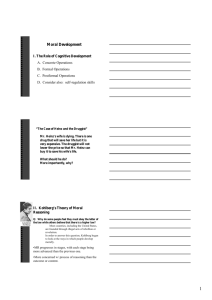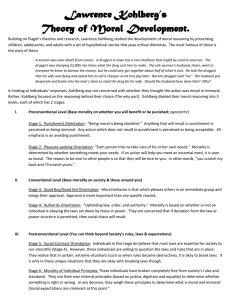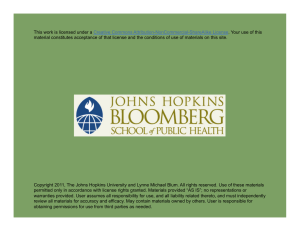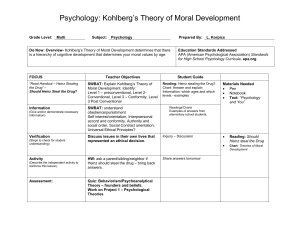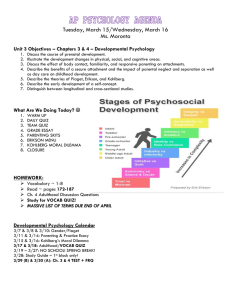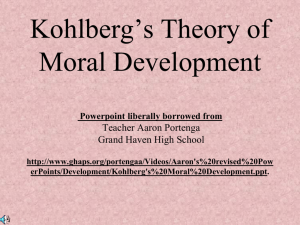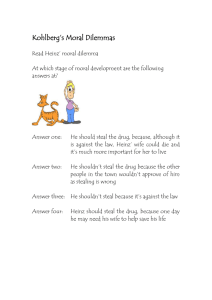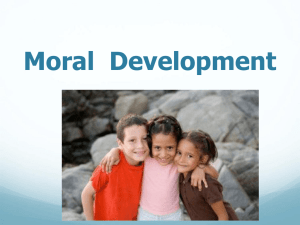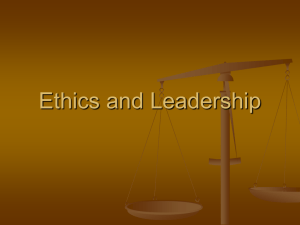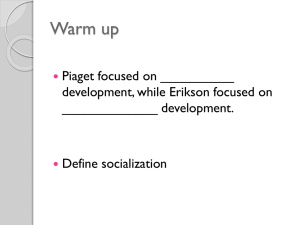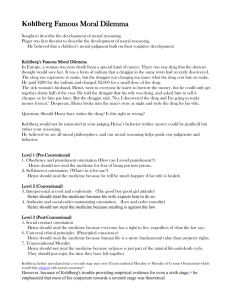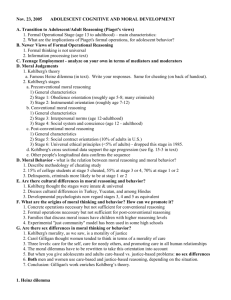kohlberg's theory of moral development
advertisement
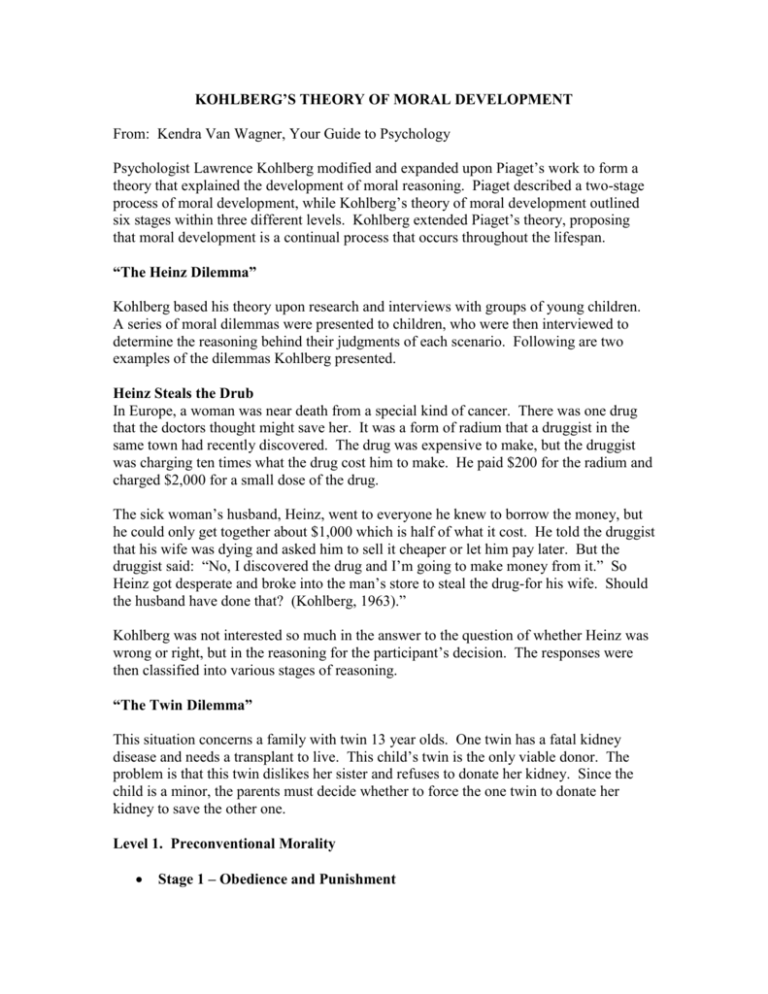
KOHLBERG’S THEORY OF MORAL DEVELOPMENT From: Kendra Van Wagner, Your Guide to Psychology Psychologist Lawrence Kohlberg modified and expanded upon Piaget’s work to form a theory that explained the development of moral reasoning. Piaget described a two-stage process of moral development, while Kohlberg’s theory of moral development outlined six stages within three different levels. Kohlberg extended Piaget’s theory, proposing that moral development is a continual process that occurs throughout the lifespan. “The Heinz Dilemma” Kohlberg based his theory upon research and interviews with groups of young children. A series of moral dilemmas were presented to children, who were then interviewed to determine the reasoning behind their judgments of each scenario. Following are two examples of the dilemmas Kohlberg presented. Heinz Steals the Drub In Europe, a woman was near death from a special kind of cancer. There was one drug that the doctors thought might save her. It was a form of radium that a druggist in the same town had recently discovered. The drug was expensive to make, but the druggist was charging ten times what the drug cost him to make. He paid $200 for the radium and charged $2,000 for a small dose of the drug. The sick woman’s husband, Heinz, went to everyone he knew to borrow the money, but he could only get together about $1,000 which is half of what it cost. He told the druggist that his wife was dying and asked him to sell it cheaper or let him pay later. But the druggist said: “No, I discovered the drug and I’m going to make money from it.” So Heinz got desperate and broke into the man’s store to steal the drug-for his wife. Should the husband have done that? (Kohlberg, 1963).” Kohlberg was not interested so much in the answer to the question of whether Heinz was wrong or right, but in the reasoning for the participant’s decision. The responses were then classified into various stages of reasoning. “The Twin Dilemma” This situation concerns a family with twin 13 year olds. One twin has a fatal kidney disease and needs a transplant to live. This child’s twin is the only viable donor. The problem is that this twin dislikes her sister and refuses to donate her kidney. Since the child is a minor, the parents must decide whether to force the one twin to donate her kidney to save the other one. Level 1. Preconventional Morality Stage 1 – Obedience and Punishment The earliest stage of moral development is especially common in young children, but adults are capable of expressing this type of reasoning. At this stage, children see rules as fixed and absolute. Obeying the rules is important because it is a means to avoid punishment. Stage 2 – Individualism and Exchange At this stage, children account for individual points of view and judge actions based on how they serve individual needs. In the Heinz dilemma, children argued that the best course of action was whichever best-served Heinz’s needs. Reciprocity is possible, but only if it serves one’s own interests. Level 2 – Conventional Morality Stage 3 – Interpersonal Relationships Often referred to as the “good boy-good girl” orientation, this stage is focused on living up to social expectations and roles. There is an emphasis on conformity, being “nice,” and consideration of how choices influence relationships. Stage 4 – Maintaining Social Order At this stage of moral development, people begin to consider society as a whole when making judgments. The focus is on maintaining law and order by following the rules, doing one’s duty, and respecting authority. Level 3 – Postconventional Morality Stage 5 – Social Contract and Individual Rights At this stage, people begin to account for the differing values, opinions, and beliefs of other people. Rules of law are important for maintaining a society, but members of the society should agree upon these standards. Stage 6 – Universal Principles Kohlberg’s final level of moral reasoning is based upon universal ethical principles and abstract reasoning. At this stage, people follow these internalized principles of justice, even if they conflict with laws and rules.
